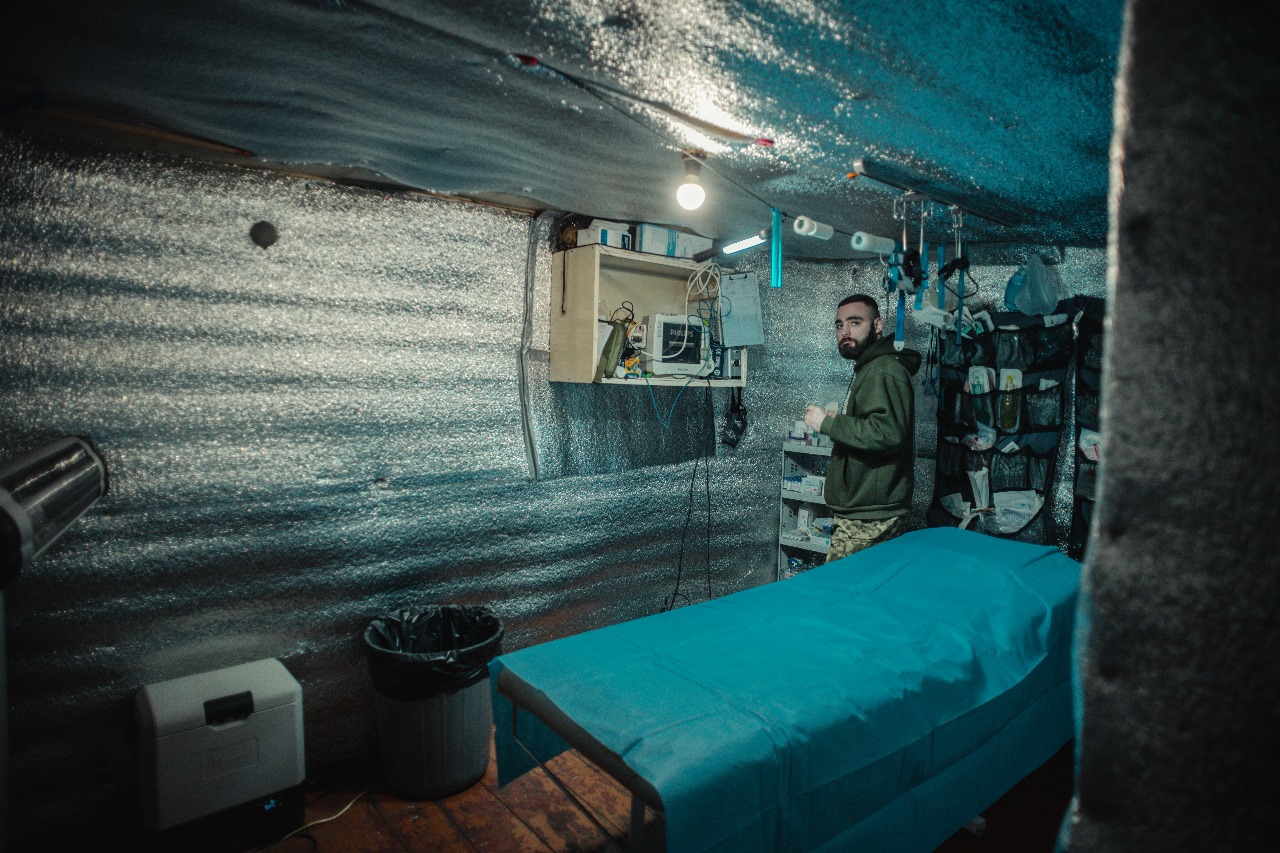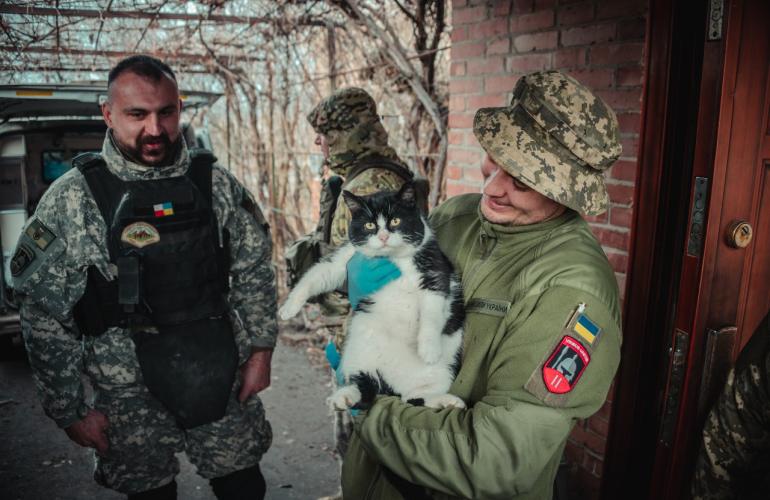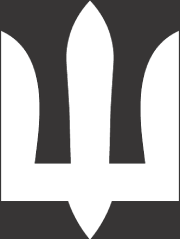
How a stabilization center works
What is included in the local “wounded soldier's package”, where does it come from and why is it most needed here?
The stabilization center of the International Legion for Defense of Ukraine was shown to us by the head of the Legion's medical service, Senior Lieutenant with the call sign Engels, and paramedic with the call sign Donatello.
It takes 15 minutes to get to the front line
It really takes 10-15 minutes to get to ground zero from here. However, such a quick evacuation of the wounded is possible only under ideal conditions, when the enemy shelling subsides and the activity of Russian drones in the air decreases. Then the wounded can be quickly transported to the site, stabilized and sent to a hospital.
Fast delivery of the wounded directly from the positions to the stabilization point is one of the main advantages of the 2nd International Legion medical service. The medics emphasize that they have managed to set up the evacuation mechanism at the grassroots level in such a way that they can do everything on their own without the need to involve the resources of the units.
“We have specially equipped vehicles that can go there and take the wounded. We emphasize that we want to reduce the evacuation time”, emphasizes Donatello.
Staff of the stabilization center
Duty at the stabilization point is organized in three shifts, each of which works at the “stabilization point” for three days. For the next three days, the shift members rest, and then work in the battalion's medical service for another three days.
“Currently, we have three shifts of four people each: two doctors, a paramedic and a driver. If we have a wounded person, the driver and the paramedic go and take him from the position and bring him here. Then two doctors stabilize the patient, and at the same time a vehicle is being prepared for further evacuation”, says the head of the medical service.
There is also a permanent “head of the hospital” - a big black cat Borys, who never leaves the hospital and helps to take care of the premises and provides moral support.
Sometimes, as the doctors joke, warming up, sipping hot soup and petting the cat in the “stabilization unit” is just as important for patients as getting the necessary medical care.
The medical service has several vehicles at its disposal: a minibus, off-road vehicles and even an American M113 armored personnel carrier. All of them are needed to evacuate the wounded from their positions, as well as a sufficient number of doctors.
“Two doctors for one wounded is quite enough. One works as an anesthesiologist, the other as a surgeon. We try to provide assistance and stabilize the wounded as quickly as possible”, says Engels.
At this time, the doctors can be joined by a paramedic or a rifleman, who assists in working with the patient. Thus, three specialists can work with one wounded person at the same time.
The main task at the staging area is to stabilize the wounded in such a way that he can get to the hospital normally. This journey can take from 30-50 minutes to 1.5-2 hours.
“We do our best to ensure that the patient remains stable for an hour. This is our task,” explains the head of the medical service.
In addition, the stabilization center near the front line has the appropriate equipment and is provided with everything necessary, including several rooms with heat, electricity and access to water.
“This is a kind of MARCH protocol at its maximum. While the MARCH protocol requires a soldier to put all this in a single first aid kit, here it takes up a whole room. There is everything necessary to stop the bleeding, provide airways, both non-surgical and surgical. Then we have everything to restore blood circulation, including blood heaters, blood itself, and solutions”, Engels says.
After providing assistance and transporting the wounded to the hospital, the medics continue to keep in touch with him.
“Representatives of the medical service and the Legion regularly visit the wounded. It is very important to have contact with them. We take care of our fighters at all stages”, summarizes Donatello.
MARCH protocol is an abbreviation for the sequence of actions in providing first aid and medical care in extreme situations: M - Massive Hemorrhage; A - Airway; R - Respiration; C - Circulation; H - Hypothermia/Head Injury.
Source: ArmyInform

